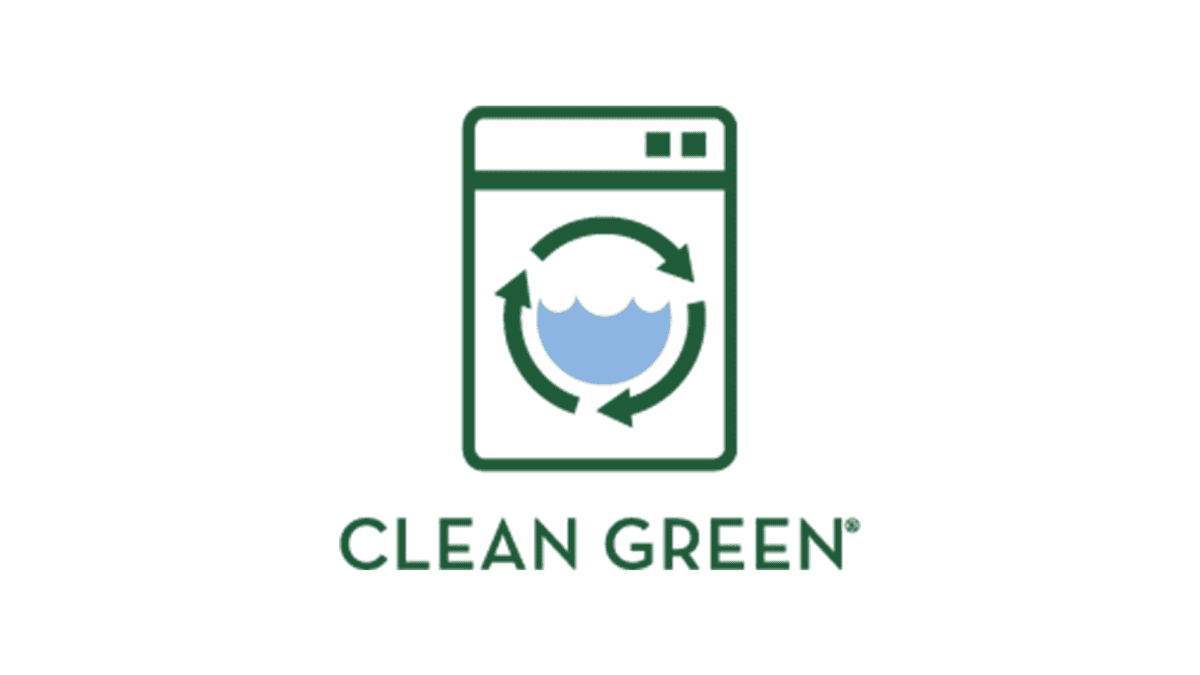Concept
Over the past eight years, approximately 90% of all commercial client launderers have complied with the agreement TRSA negotiated with the Environmental Protection Agency (EPA) to voluntarily eliminate surfactants containing nonylphenol ethoxylates (NPEs).
Yet the turn to new detergents, wash chemistries and processes has created additional challenges and often greater expense. Formulating effective new solutions to replace old reliable ones, for many launderers, has complicated relationships with publicly-owned treatment works (POTWs). Businesses’ propensity to use less water and consequently discharge less (to reduce their water and sewer bills) has increased the concentration of pollutants in their discharges. This can require further modifications of wash chemistry.
Furthermore, surcharges for volume of public water usage or substandard water test results are increasingly being supplanted by costly non-compliance fees.
The net result is that where once professionals in the laundry trade had to get used to weighing their impact on public wastewater, in many instances, they are now increasingly dealing with public wastewater’s impact on them.
TRSA has reviewed methodologies being implemented to meeting the challenges of this post-NPE world. Operators have attested to the need for greater attention to how shifts in either wastewater or washwheel strategy can reduce the effectiveness of the existing strategy in the other. Finding the proper chemistry and treatment protocol can be hair-raising.
Implementation
Balance alkalinity/pH in washwater. The more alkaline in a wash formula, the longer the pH stays elevated, extending the time that fibers are open, allowing more soil to be removed from the textiles. At some point, however, pH must be reduced or textiles will dull and grey. This cycle is more difficult when recycled water gets to the washwheel. Such water often has a high pH but its alkalinity is difficult to determine unless pH is high. It’s hard to know when to use weak acids, such as laundry sours, to reduce pH.
Make adjustments to wash formulas one at a time. Fine tune wash chemical costs as you progress with your results.
Minimize total dissolved solids (TDS) in washwater. TDS are the minerals, salts or metals dissolved in water, posing one of the most universal problems for laundries. Wash chemistry resulting in elevated levels of TDS can result not only in the greying and shortened lifespan of textiles, but mineral build-up on equipment and the clogging of ceramic microfilters (CMFs), wash wheels, and plumbing. Additionally, high counts of TDS and/or sodium in discharge water may trigger issues of EPA noncompliance. Coping strategies:
- Do not use silicated alkalis when using recycle water technologies such as CMFs. This will plug ceramic filter elements.
- Reduce alkaline-builders in the wash chemistry, substituting additional detergent or polymer dosages. The latter are proprietary formulas to be discussed with chemical suppliers.
- Adding sulfuric acid to the recycle water system will reduce the TDS in the recycle water. This will reduce the volume of concentrated weak acid (sour) usage to neutralize textile pH that can crate salt formation in the fibers of the textiles.
- Replacing chlorine bleach or hydrogen peroxide with a peroxyacetic oxidizer such as a peracid will significantly reduce TDS in the wash formula.
Reduce negative impact of fabric softeners, oxalic acid and silicates. Standard fabric softeners can clogceramic filter elements in the washwheel; consider silicone-free fabric softeners instead of those with silicone or siloxanes.
Oxalic acid is often used as a stain remover for white textiles. Calcium oxylate will get embedded in polymeric microfiltration elements and will have to be removed with strong acids. Unfortunately, the use of strong acids on polymeric membranes will degrade the membrane and reduce its life. At present, there is no effective replacement for oxalic acid.
Sour usage may have to be increased to reduce the pH of recycle water used in the rinse cycle. As sour usage increases, chemical costs increase. Initially attempt a lower sour (weak acid) dosage—2 to 4 oz/CWT to reduce the recycle water pH. Depending on results, increase dosage as high as 8 to 12 oz/CWT (four times the amount of normal usage).
Phosphates—Reduce and replace for results. Phosphates (sodium tripolyphosphates or STPPs)in the water recycling process keeps soils suspended and reduce “hardness” in wash water. However, regulations in 25 of the 50 states limit the use of phosphates, requiring a reliable substitute, as all wash processes require superior soil suspension. Consider replacement water conditioners with proprietary polymers.
Calcium and magnesium are the two primary minerals contributing to water hardness. Feces in incontinent pads and diapers can be sources of these elements, but recycle water—depending on its source of wastewater—may also be a major contributing factor.
“Greener” alternatives include methylglycinediacetic acid (MGDA). Many international wash chemists believe that products with MGDA as an active agent can successfully replace phosphate-based product. But thus far, there has been no authoritative testing and confirmation domestically.
Avoid water softeners in recycled water. The addition of textile soils containing calcium and magnesium to recycled water is an invitation to scale formation on on equipment. Filters can be plugged, requiring replacement of the resin beads in filtration systems. Occasionally adding fresh water to recycled water can reduce hardness, TDS, and conductivity.
Pay close attention to dosing detergent in stored recycled water. Such dosing can lead to excess foaming in water storage tanks or direct-water heaters. Foaming is typically caused by residual fatty acids and surfactants in the recycle water. It can also result from air being drawn into the system.
But decreasing detergent dosing canreduce effectiveness, leading to greying and dulling of textiles due to TDS and suspended materials in the water re-depositing into textile fibers. Most recycle waters are stored in tempered-water or hot-water tanks at approximately 100 degrees, incubating bacteria. If detergent dosing is too low, these tanks will quickly become septic and the sulfur-producing bacteria will create a rotten egg odor in the plant and on the textiles.
Don’t sacrifice pH in recycle hot water systems. Any time a direct fire heat source is used to save energy and to heat water (recycle or fresh water), pH will decrease. Why? Combustion produces carbon dioxide and as water flows down over the flame it comes in contact with the carbon dioxide. This forms carbonic acid which reduce the water pH between 4 and 5.
Almost all wash formulas use alkaline flushes, breaks and carryovers. So whether you are using low pH recycled water or fresh water, the washfloor tech should do pH and alkalinity tests. Enough alkali must be added to reach the necessary pH and alkalinity to get the textiles clean. If you are starting at a pH of 4, it will definitely use more alkali to get to the desired pH of 10.5 to 11.5 and it will cost more.
Reduce high biochemical oxygen demand (BOD). “Green” wash formulas often can cause of increased BOD concentrations. Green chemistry is designed to break down in a short period of time, leading to faster consumption of oxygen and making it appear that the BOD is greater. You can go “inorganic,” utilizing more alkali or polymer booster, but an increase in the TDS concentration will occur. So what’s really “green?”
Such complications indicate that green chemistry is not an alternative to outsourcing heavily soiled textiles such as shop towels and print towels to laundries who are best suited to handle them.
Expect changes to continue. Over time, everything is subject to change—regulations, wash chemistries, equipment, et al. Textile products are no exception. With polyester and microfiber becoming more dominant, new products will require new and unique wash chemistries. They always have.
Get to know the details personally. Don’t buy in to the concept of “hands-off” chemistry and water systems. You are aware the need to notify your chemical supplier when you need to make a big move like adding washing equipment or water recycling. Greater involvement and vigilance means keeping your washfloor tech informed of even the slightest changes in water or textile quality. Nowadays, you can never tell what will require a change of wash chemistry.
Practical Applications
A 2014 U.S. Department of Energy study on enhanced water recycling examined the laundry processes of Seattle’s Grand Hyatt Hotel. The facility processes approximately 280,000 lbs of textiles and linens on a monthly basis utilizing five washers: two 165-lb., two 135-lb., and one 35-lb., and a fully-contained recycling system. The system pumps wastewater to a holding tank where it is transferred to a lint removal vibrating system for extraction of all large solids in the process water. A pump sends water through pressure filters to remove suspended solids, oils/grease, soaps and other organics. This water is then sent to the recycle tank. Prior to being re-injected into the wash system, an ultraviolet and ozone disinfectant system is used to kill all bacteria before the water is reintroduced to the wash cycle.
A hospitality launderer serves more than 100 clients throughout New England, including ten of the largest hotels in Massachusetts. In the seven years since installing a water reclamation system, they’ve reduced their water consumption and discharge by 70%. Based on the volume of linens and textiles processed annually, this equates to a savings of approximately 42 million gallons per year. A substantial reduction in their fuel (natural gas) costs has been realized, too, as water is only heated once and maintains its temperature through multiple wash and rinse cycles.





